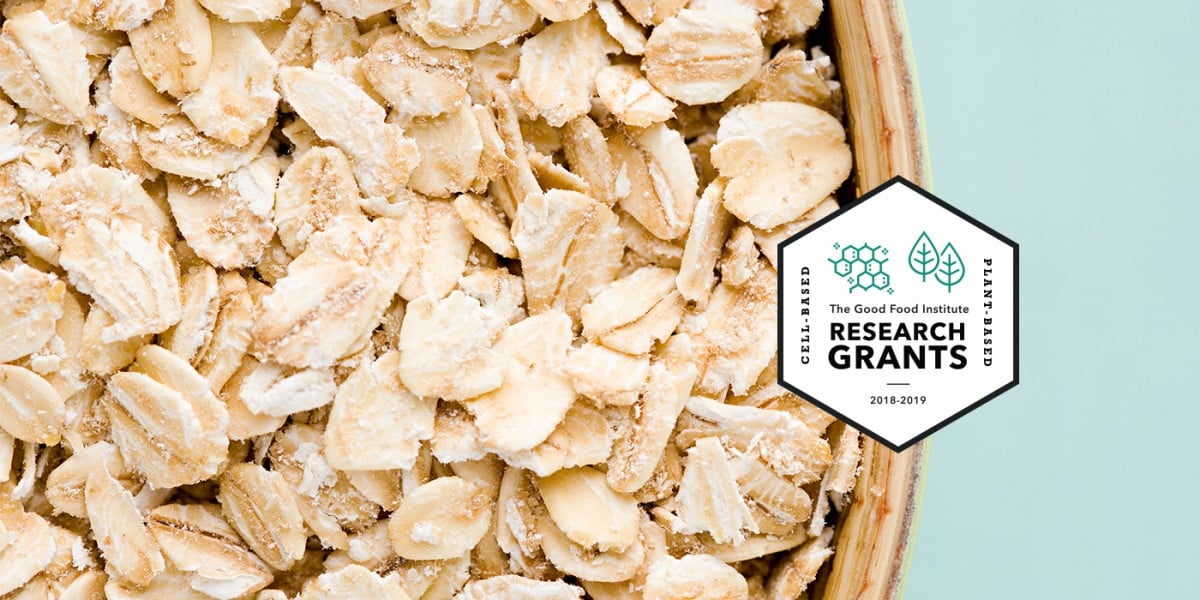Could fermented oat protein help plant-based meat level-up?

Yogurt. Sourdough bread. Tempeh. Kimchi. Beer. Fermented food is no novelty. But fermented oat protein for plant-based meat…well that’s something new.
Mari-Liis Tammik and her team, directed by Dr. Raivo Vilu, at TFTAK (Center of Food and Fermentation Technologies) in Estonia are using fermented oat protein in a novel way. Tammik’s research focuses on using this common and resource-efficient grain to optimize the texture, flavor, and nutrition of plant-based meat. Her proposal earned a win in GFI’s inaugural Research Grant Competition.
This research on fermentation can advance the entire plant-based market and diversify the plant-based meat ingredient supply chain. Read on to learn what it’s all about!
What motivated you to research plant-based meat ingredients?
It is so clear that our craving for animal products has taken a toll on our environment, and our food production is unsustainable. Western diets have the highest environmental footprint as they consist mainly of animal products: eggs, meat, and dairy. New plant-based products are one solution for a sustainable food system. Our project offers technology easily adapted by food producers to help accelerate the switch to a more plant-based diet. We hope this will help change public opinion, as it is crucial not only to target vegetarians or vegans but win over omnivores as well.
Why is Estonia an ideal place to research oat fermentation?
Oats grown in Estonia are currently used for animal feed or direct production of foods (oatmeal and oat flour). The economic value in these products is low, and we import ingredients for plant-based food. Our project uses oat protein concentrate to produce plant-based meat products. This increases the value of regional ingredients and is more sustainable because it reduces food transportation. I think people in Estonia would be more willing to try plant-based meat from familiar and locally-grown food.
How does fermentation improve oat bran’s nutritional profile?
Although oat bran is rich in fiber with a modest amount of protein, its use in plant-based meats can be limited because of several antinutrients. Antinutrients are naturally occurring substances in food that reduce our ability to absorb essential nutrients. They must be eliminated or minimized for our body to use vitamins and protein. Some types include phytates, lectin, and saponins. Phytates decrease mineral content by blocking the absorption of metals, especially zinc, calcium, and iron.
On a positive note, fermentation and extrusion are two techniques that degrade antinutrients for a better nutritional profile. In fermented oat products, the bioavailability of minerals is higher due to the partial breakdown of phytates.
How long does the process of fermentation take, specifically for oat protein?
Depending on the final purpose, the process could take 24 to 48 hours. In our project, we need to determine the optimal time to degrade phytates and produce exopolysaccharides (carbohydrates synthesized by microorganisms) in oat protein concentrate. The final product has to taste and smell good as well, which depends on the bacteria used during fermentation.
Why is the amino acid lysine so important in plant-based meats?
Lysine is one of nine essential amino acids in humans required for growth and tissue repair. Oats contain health-promoting components including soluble dietary fiber, antioxidants, and omega-3 fatty acids. However, oats have a limited amount of lysine. Additional lysine could be produced through fermentation or adding protein from legumes (pea protein) to the final product.
What type of final product do you hope to formulate?
The main goal is to biomimic meat by producing material with a highly fibrous texture. Through fermentation, we hope to produce extruded material that does not need many emulsifiers or stabilizers. The final product will be extruded in different shapes and sizes and could even be combined in meat products.
Does fermentation have the potential to improve other meat analogs? Which would be most suitable?
Fermentation has the potential to improve meat alternatives made from legumes, grains, and seeds—mainly soy, fava beans, and rapeseed. Not only is fermentation needed to increase nutritional value, but it could also improve sensory attributes. Often, products made from legumes or cereal have a distinct bitter taste to them. It is possible to remove undesired off-flavors and smells through fermentation. The process can even make plant-based meats appeal to a larger group of consumers.
Check out all of the projects here! GFI senior scientist Dr. Erin Rees Clayton describes how the fourteen plant-based and cell-based meat projects are developing critical tools to elevate the entire industry.

